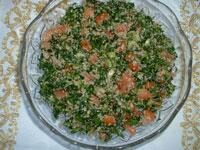Zogby: Christmas in Bethlehem: Then and Now
The Christmas story as it is told in the West, in scripture and tradition, contains timeless elements that have shaped our culture in significant ways. As we tell it, year in and year out, the story conveys to those who listen powerful themes evoking deep feelings.
It is, at its core, a tale of a helpless child, born as an outcast, whose role became transformative in human history. Unrecognized, at first, the importance of this birth was initially only understood by the lowly of the earth, “the shepherds of the field”. Later, “kings from the East” came to pay homage, bringing gifts. Their appearance raised the ire of the local rulers forcing the baby’s parents to flee in order to save the life of their newborn child.
I want to take a moment to reflect on the elements and themes of this story, seeing contemporary realities through its prism.
Two thousand years ago, Palestine was subject to a harsh occupation, much as it is today. In some ways, though, the conditions back then allowed the residents of occupied Palestine greater mobility than the current inhabitants of that land. As we are told, Joseph had to take his expectant wife from Nazareth, where they were living, to Bethlehem in order to fulfill a requirement, imposed by the authorities, to register in their ancestral village as part of a nationwide census. Today, of course, all this would be impossible. In the first place no Palestinian originally from Bethlehem could ever have moved to Nazareth. The occupation and closure of the West Bank makes that sort of movement impossible. Furthermore, Israeli law now prohibits an Arab from Nazareth from marrying a Bethlehemite and bringing their spouse across the Green Line to reside in Israel.
Additionally, while thousands of Palestinians in Bethlehem, both Muslim and Christian, can see Jerusalem from their homes, they can not go to the Holy City to pray. And Arab Christians from Jerusalem, likewise, can not easily go the Christmas services in Bethlehem to pray alongside their European and American co-religionists who dominate at the seasonal event.
Bethlehem of old was overcrowded and under siege. Today, as well, the city itself is being strangled, hemmed in by settlements that have confiscated the town’s ancestral lands to make way for a 30 foot barrier wall and massive Jewish-only housing cutting the Arab residents off from nearby Jerusalem. The constriction of growth and the lack of economic opportunity have forced Bethlehemites to flee in search of jobs and freedom, with tens of thousands of them and their descendants now living in the U.S. and the Americas. They can return to visit with difficulty, but are not permitted by the occupation authorities to take up permanent residency in the town of their origins.
While the kings of old, we are told, were able to travel from afar bearing gifts to honor the newborn child, one can only imagine the difficulties they would encounter today dealing with Israeli soldiers at the Allenby Bridge. Having endured their interrogations, myself, I can hear the kings answering hours of questions, such as “Where are you from?” “Who are your parents, grandparents?” “Why are you here?” Who are you visiting?” “What are these gifts for?” And on and on. In the end, it is doubtful whether those hapless “kings from the East” would have gained entry. That Joseph and Mary and Jesus were able to flee to Egypt to escape Herod’s vengeful wrath was possible back then. Today, that option is unlikely. The barrier/wall that encapsulates the West Bank and the closure of Gaza would make such a trip impossible.
Finally, as I reflect on the birth of Jesus, I can not help but think of the nearly 400 babies who will be born, this very day, to Palestinian parents in the West Bank and Gaza. I think as well of the number of those who will perish at birth because of inadequate medical services (some babies have been put at fatal risk at checkpoints, because Israeli soldiers would not permit their delivering mothers to pass). And I think of Mary, 2000 years ago, and am grateful that, despite all she endured, there were no checkpoints blocking her way to Bethlehem.
Our traditions tell us that Mary’s joy at the birth of her son was tempered by foresight. She knew her child would grow and endure great suffering. Likewise, the joy that Palestinian parents experience when greeting new life these days must, no doubt, be accompanied by concern. Not only must they question how they will provide for their new child, but they must face down their fears of bringing up a son or daughter under occupation, with its dangers and hardships. From the pressures and humiliations encountered daily by Palestinians in the West Bank, to the grinding poverty and despair facing those trapped in Gaza, life under hostile foreign rule can drain joy out of even the most blessed events.
There is a traditional Christmas carol that asks the question “What child is this?” – the answer, of course, being “Jesus, the son of Mary”. But given the universal message conveyed by the Christmas story we also understand that the child is for us, a reminder of our responsibility to care for the helpless and the unrecognized. And so when we think of the vulnerable children born today not only in Palestine, but those born anywhere where life is at risk, we are not to ask “What child is this?” – because we know that they are ours – to acknowledge and protect, like the shepherds and kings, enabling all of these children to grow and to help change our world.
James Zogby
Huffington Post


